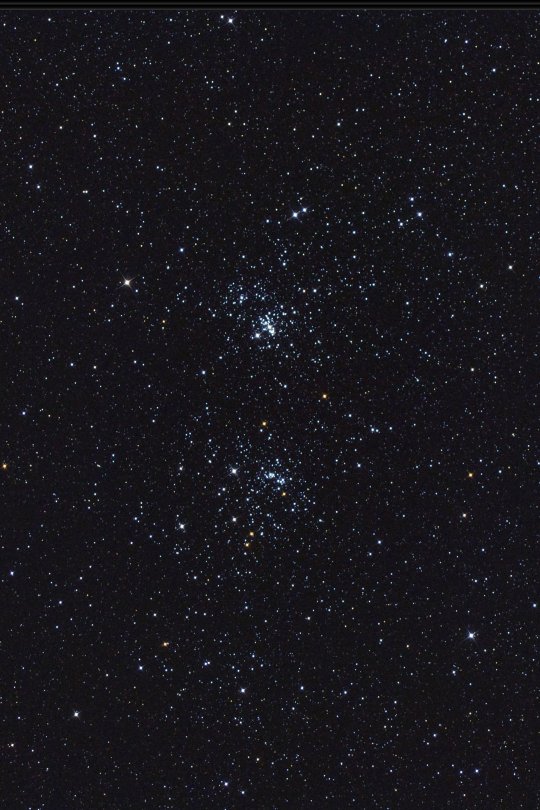#ngc 884
Text
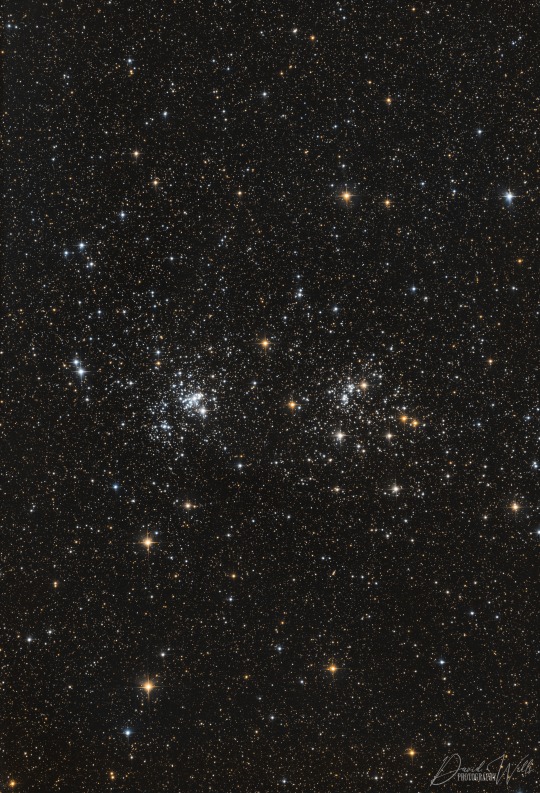
The Double Cluster: h Persei (NGC 869, left) and χ Persei (NGC 884, right) // David Wills (PixelSkiesAstro)
#astronomy#astrophotography#stars#star cluster#open cluster#double cluster#h Persei#chi Persei#NGC 869#NGC 884#perseus
56 notes
·
View notes
Text
yesterday I thought that the whole astronomy lesson would be spent making maps inside, but then the sky cleared and we went out to look through telescopes. we looked at the double star Mizar and Alcor and Mizar was also visible as two stars, then we looked at the Pleiades, the double star cluster in Perseus NGC 869 and NGC 884 and the owl cluster NGC 457.
and I even tried to somehow participate in all this, carefully watched how telescopes were assembled, asked what we were looking at now, how to measure, etc. and it really was more interesting than standing on the sidelines and not understanding what was happening. I even think maybe in the next lesson I’ll ask how to properly look for objects through a telescope and try to do it
and it also inspired me to take astrophotography again

(my old photo of the Pleiades)
#astrophysics student#astronomy student#astronomy#astrophysics#astrophotography#stem academia#dark academia#student life#stem student#study blog#pleiades#stars#star cluster
24 notes
·
View notes
Photo
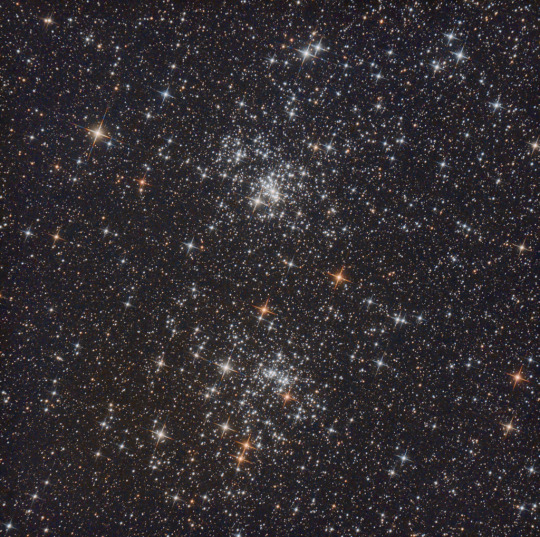
The Double Cluster in Perseus : This pretty starfield spans about three full moons (1.5 degrees) across the heroic northern constellation of Perseus. It holds the famous pair of open star clusters, h and Chi Persei. Also cataloged as NGC 869 (top) and NGC 884, both clusters are about 7,000 light-years away and contain stars much younger and hotter than the Sun. Separated by only a few hundred light-years, the clusters are both 13 million years young based on the ages of their individual stars, evidence that they were likely a product of the same star-forming region. Always a rewarding sight in binoculars, the Double Cluster is even visible to the unaided eye from dark locations. But a shroud of guitar strings was used to produced diffraction spikes on the colorful stars imaged in this vibrant telescopic view. via NASA
1K notes
·
View notes
Photo

2023 July 7
The Double Cluster in Perseus
Image Credit & Copyright: MÃ¥rten Frosth
Explanation: This pretty starfield spans about three full moons (1.5 degrees) across the heroic northern constellation of Perseus. It holds the famous pair of open star clusters, h and Chi Persei. Also cataloged as NGC 869 (top) and NGC 884, both clusters are about 7,000 light-years away and contain stars much younger and hotter than the Sun. Separated by only a few hundred light-years, the clusters are both 13 million years young based on the ages of their individual stars, evidence that they were likely a product of the same star-forming region. Always a rewarding sight in binoculars, the Double Cluster is even visible to the unaided eye from dark locations.
∞ Source: apod.nasa.gov/apod/ap230707.html
75 notes
·
View notes
Photo

The Double Cluster in Perseus via NASA https://ift.tt/liNIWCL This pretty starfield spans about three full moons (1.5 degrees) across the heroic northern constellation of Perseus. It holds the famous pair of open star clusters, h and Chi Persei. Also cataloged as NGC 869 (top) and NGC 884, both clusters are about 7,000 light-years away and contain stars much younger and hotter than the Sun. Separated by only a few hundred light-years, the clusters are both 13 million years young based on the ages of their individual stars, evidence that they were likely a product of the same star-forming region. Always a rewarding sight in binoculars, the Double Cluster is even visible to the unaided eye from dark locations.
2 notes
·
View notes
Photo

A Double Star Cluster in Perseus - Tommy Lease
Few star clusters this close to each other. Visible to the unaided eye from dark sky areas, it was cataloged in 130 BC by Greek astronomer Hipparchus. Some 7,000 light-years away, this pair of open star clusters is also an easy binocular target, a striking starfield in the northern constellation of the mythical Greek hero Perseus. Now known as h and chi Persei, or NGC 869 (above right) and NGC 884, the clusters themselves are separated by only a few hundred light-years and contain stars much younger and hotter than the Sun. In addition to being physically close together, the clusters' ages based on their individual stars are similar - evidence that both clusters were likely a product of the same star-forming region.
3 notes
·
View notes
Text
The Double Cluster in Perseus
This pretty starfield spans about three full moons (1.5 degrees) across the heroic northern constellation of Perseus. It holds the famous pair of open star clusters, h and Chi Persei. Also cataloged as NGC 869 (top) and NGC 884, both clusters are about 7,000 light-years away and contain stars much younger and hotter than the Sun. Separated by only a few hundred light-years, the clusters are both 13 million years young based on the ages of their individual stars, evidence that they were likely a product of the same star-forming region. Always a rewarding sight in binoculars, the Double Cluster is even visible to the unaided eye from dark locations.
0 notes
Text

APOD: The Double Cluster in Perseus (7/7/23)
This pretty starfield spans about three full moons (1.5 degrees) across the heroic northern constellation of Perseus. It holds the famous pair of open star clusters, h and Chi Persei. Also cataloged as NGC 869 (top) and NGC 884, both clusters are about 7,000 light-years away and contain stars much younger and hotter than the Sun. Separated by only a few hundred light-years, the clusters are both 13 million years young based on the ages of their individual stars, evidence that they were likely a product of the same star-forming region. Always a rewarding sight in binoculars, the Double Cluster is even visible to the unaided eye from dark locations.
© Mårten Frosth
1 note
·
View note
Photo
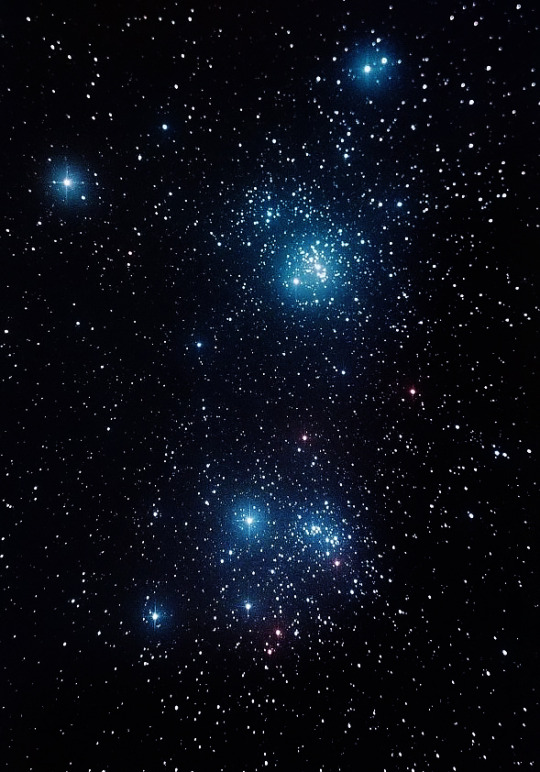
Caldwell 14 the Double Cluster in Perseus
#ngc 869#nasa#space#ngc 884#star cluster#astrophotography#astronomy#solar system#galaxy#planet#stars#planets#Night Sky#universe#cosmos#science
596 notes
·
View notes
Photo
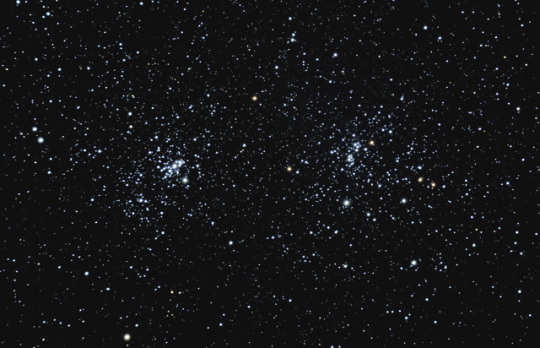

counting stars & making wishes
1 & 2 | Joel Tonyan on Flickr
#double cluster#ngc 869#ngc 884#ngc 457#ngc 436#et cluster#curators on tumblr#curated content#astrophotography#photography#original photography#original astrophotography#space#stars#night sky#space aesthetic#aesthetic#minimal#star cluster#mine#photographers on flickr
1K notes
·
View notes
Text

The Double Cluster: h Persei (NGC 869, left) and χ Persei (NGC 884, right) // Piero Venturi
#astronomy#astrophotography#stars#star cluster#open cluster#double cluster#h Persei#chi Persei#NGC 869#NGC 884#perseus
59 notes
·
View notes
Photo
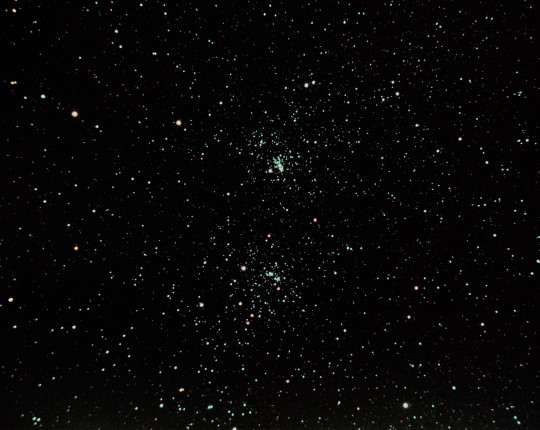
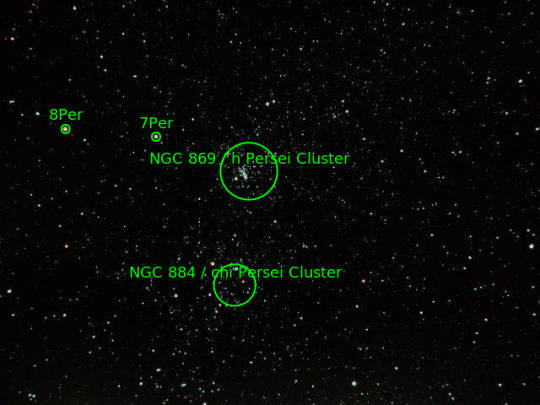
NGC 869 y NGC 884
El famoso y espectacular doble cúmulo de Perseo (h – χ Persei) se encuentra a unos 7400 AL. El primero se encuentra algo más cercano a nuestro Sol – en unos pocos centenares de años luz – y es ligeramente más grande.
También parece ser que NGC 869 es el más antiguo, aunque ambos rozan los 10 millones de años, unos recién nacidos. La masa de este cúmulo supera las 3500 masas solares, habiéndose detectado estrellas con unas pocas decenas la masa del Sol. Destacan especialmente aquellas que han evolucionado más rápido debido a su masa y ya se han convertido en gigantes naranjas o rojas.
En las cercanías, al norte de NGC 869, destaca la estrella SAO 23149 (7 Persei según la nomenclatura de Flamsteed) que brilla con magnitud 6, pero se trata de una estrella gigante naranja de tipo G, que se encuentra mucho más cercana, a unos 775 AL, y la perspectiva provoca que parezca pertenecer a la periferia del cúmulo estelar. Tiene 191 millones de años.
8 Persei, situada a 416 AL, es una gigante roja de 2000 millones de años de edad que se está expandiendo.
Como veis, las dos estrellas más destacadas de la imagen son mucho más viejas que el doble cúmulo.
El doble cúmulo hay que verlo con telescopios a muy bajos aumentos o, mejor todavía, con prismáticos. Si no lo habéis observado, no dudéis. Incluso desde la ciudad es visible con unos binoculares.
Refractor TS Photoline 72 mm a f6. Cámara imx 294.
#doble cúmulo#perseo#cumulo abierto#open cluster#ngc 869#ngc 884#astronomia#astronomy#astrofotografia#astrophotography#skynight#astronomia urbana#urbanastronomy#desde mi ventana#from my window#universo#universe
2 notes
·
View notes
Photo
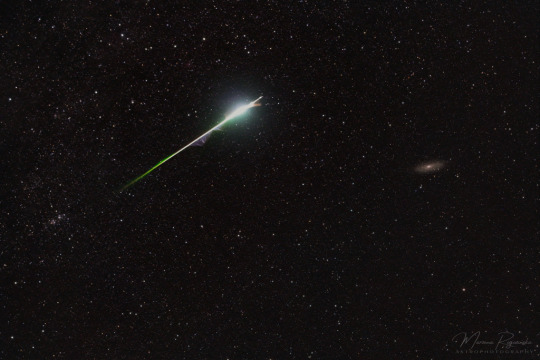
Island Universe, Cosmic Sand : Stars in our own Milky Way Galaxy are scattered through this eye-catching field of view. From the early hours after midnight on August 13, the 30 second exposure of the night sky over Busko-Zdroj, Poland records the colorful and bright trail of a Perseid meteor. Seen near the peak of the annual Perseid meteor shower it flashes from lower left to upper right. The hurtling grain of cosmic sand, a piece of dust from periodic comet Swift-Tuttle, vaporized as it passed through planet Earth's atmosphere at almost 60 kilometers per second. Just above and right of center, well beyond the stars of the Milky Way, lies the island universe known as M31 or the Andromeda Galaxy. The Andromeda Galaxy is the most distant object easily visible to the naked-eye, about 2.5 million light-years away. The visible meteor trail begins only about 100 kilometers above Earth's surface, though. It points back to the meteor shower radiant in the constellation Perseus off the lower left edge of the frame. Follow this bright perseid meteor trail below and left to the stars of NGC 869and NGC 884, the double star cluster in Perseus. via NASA
425 notes
·
View notes
Photo

2022 November 22
A Double Star Cluster in Perseus
Image Credit & Copyright: Tommy Lease
Explanation: Few star clusters this close to each other. Visible to the unaided eye from dark sky areas, it was cataloged in 130 BC by Greek astronomer Hipparchus. Some 7,000 light-years away, this pair of open star clusters is also an easy binocular target, a striking starfield in the northern constellation of the mythical Greek hero Perseus. Now known as h and chi Persei, or NGC 869 (above right) and NGC 884, the clusters themselves are separated by only a few hundred light-years and contain stars much younger and hotter than the Sun. In addition to being physically close together, the clusters' ages based on their individual stars are similar - evidence that both clusters were likely a product of the same star-forming region.
∞ Source: apod.nasa.gov/apod/ap221122.html
51 notes
·
View notes
Photo
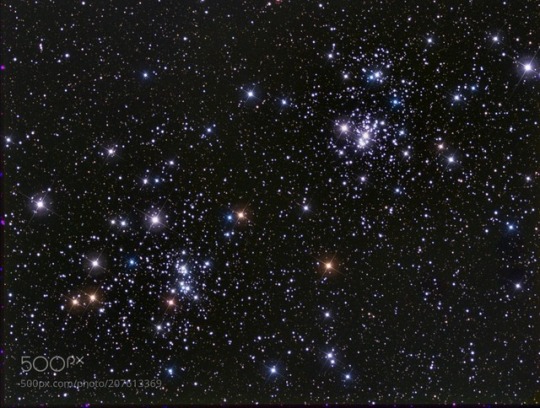
Double Cluster by jfmiller7
1 note
·
View note
